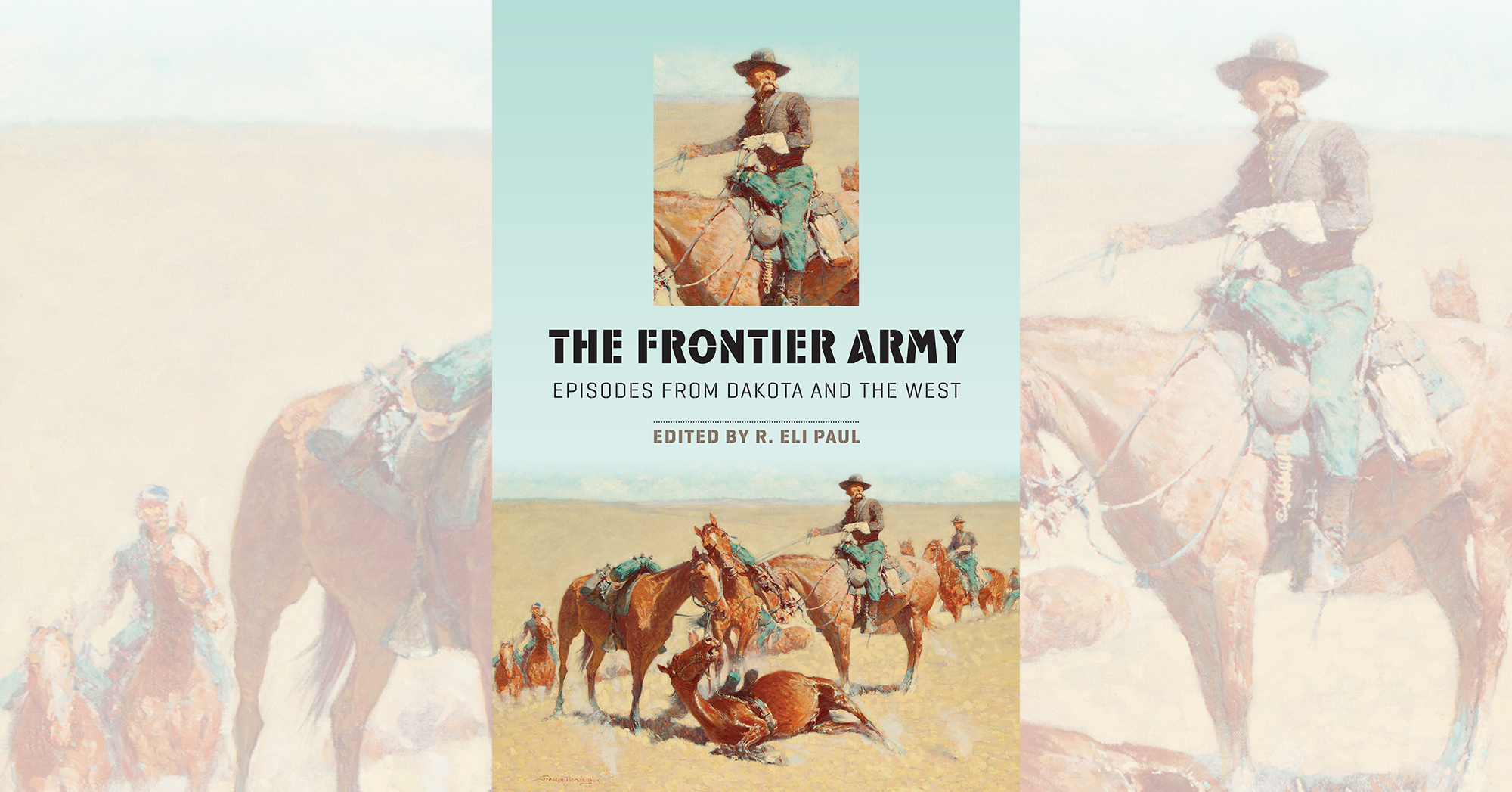The Frontier Army: Episodes From Dakota and the West, edited by R. Eli Paul, South Dakota Historical Society Press, Pierre, 2019, $26.95
As with so many historical events, the period in which the U.S. Army asserted control in and around the Black Hills of South Dakota between 1854 and ’90 represents a clash of romantic myth and hard reality that continues to evolve with the discovery or re-examination of firsthand accounts. The Frontier Army is a compilation of seven eyewitness accounts from the era and their effects on our knowledge and perceptions, as presented by seven historians.
The first essay comes from volume editor R. Eli Paul. It centers on an account of Colonel William S. Harney’s attack on Brulé Lakota Chief Little Thunder’s village at Blue Water Creek, Nebraska Territory, on Sept. 3, 1855, as related by Harney’s aide-de-camp, 2nd Lt. Marshall T. Polk II, in letters to his girlfriend. The attack had come in reprisal for the Aug. 19, 1854, massacre of 2nd Lt. John Grattan, his 29 soldiers and a civilian interpreter after a badly botched attempt to arrest a Sioux for stealing a cow. Such hitherto unpublished letters provide an immediacy and insight into the mindset of the era with a candor often missing from official accounts, though they are not immune to bias, as when Polk—a nephew of President James K. Polk—states, “The chief was killed, and the voice of ‘Little Thunder’ will no more rattle of the council of his tribe.” In fact, as Paul notes in the extensive annotations, Little Thunder managed to escape very much alive.
In the next two essays Paul L. Hedren follows the 4th U.S. Artillery on campaign with Brig. Gen. George Crook, and Douglas C. McChristian uses newfound literature to examine the evolving role the much-overlooked artillery came to have in support of the celebrated infantry and cavalry. Next, Lori A. Cox-Paul delves through a cache of contemporary accounts, from newspapers to letters, to reveal how soldiers—whose contact with hostile Indians represented but a small fraction of their tours of duty—fought the omnipresent enemies of “isolation, boredom and monotony” that “characterized life on the Western posts.” In fact, in the 1870s–90s soldiers engaged in a range of off-hours activities aside from gambling, drinking and whoring. While gambling may have been regarded as, to quote one correspondent, “the most demoralizing Army vice,” a deck of cards offered plenty of games that didn’t involve wagering. Other popular pastimes ranged from shooting, croquet and costume balls to bowling.
Brian W. Dippie provides a retrospective on the career of Frederic Remington, the corpulent New Yorker whose illustrations and paintings helped spread romantic notions of the West more effectively than a good many writers—including Owen Wister, who wrote in 1902 that Remington had “taken the likeness of the modern American soldier and stamped it upon our minds with a blow as clean-cut as is the impression of the American eagle upon our coins in the mint.” Dippie shares impressions of Remington from contemporaries and the artist himself.
Jerome A. Greene devotes Chapter 6 to the Wounded Knee massacre of Dec. 29, 1890, using accounts culled entirely from surviving Lakotas, whose experiences and memories of the “Place of the Big Killings” are anything but uniform. Finally, Frank N. Schubert looks at the recent growth in statuary honoring the buffalo soldiers of the 9th and 10th U.S. Cavalry regiments (nine works created since 1977, compared to only three Civil War–era monuments in which black soldiers appear). While examining their record, he debunks much of the legend that accompanied it, starting with Indian activist Vernon Bellecourt’s declaration that far from a token of respect, the Indian term “buffalo soldier” originally referred only to “their dark skin and texture of their hair,” and that otherwise they were just another band of “marauding murderous cavalry units.
For aficionados of the Old Army, Paul’s compendium offers a variety of interesting and fresh insights.
—Jon Guttman





